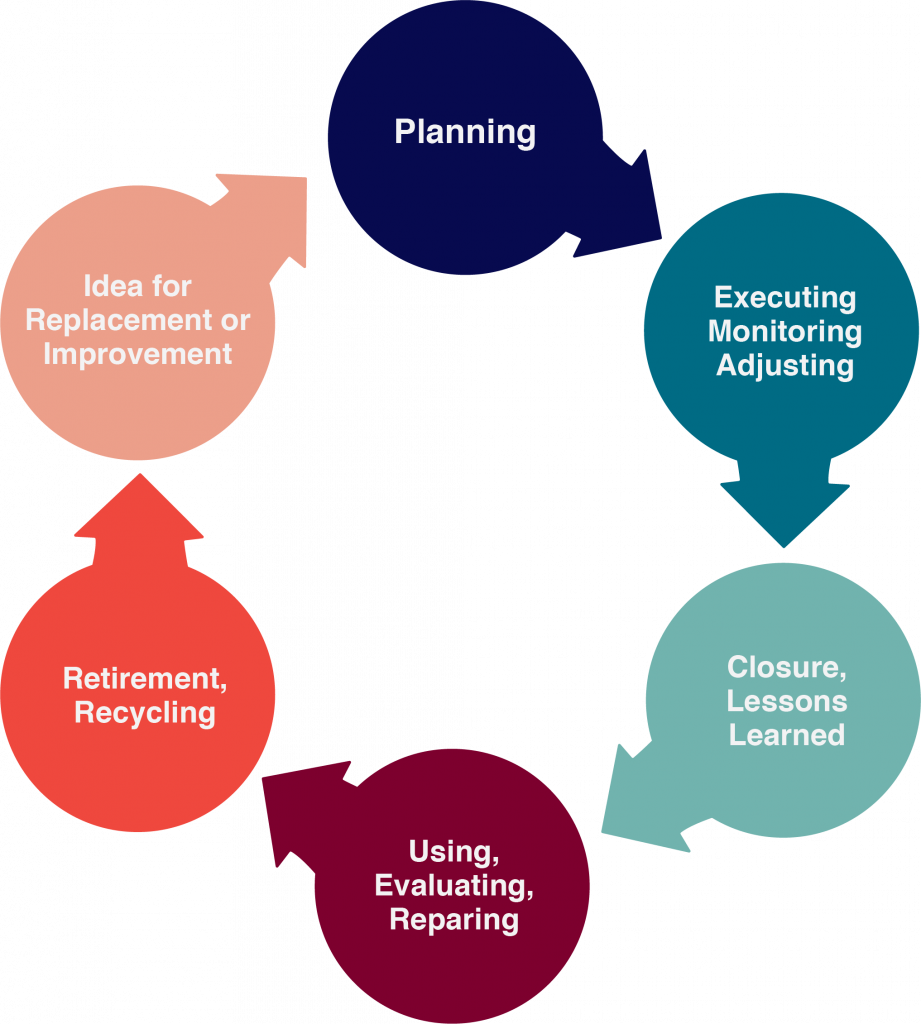11.5. Lesson Learned
Project closure is traditionally considered the final phase of a project. It includes tasks such as
- Transferring deliverables to the customer
- Cancelling supplier contracts
- Reassigning staff, equipment, and other resources
- Finalizing project documentation by adding an analysis summarizing the project’s ups and downs
- Making the documentation accessible to other people in your organization as a reference for future projects
- Holding a close-out meeting
- Celebrating the completed project

The Close-Out Meeting is an opportunity to end a project the way you started it—by getting the team together. During this important event, the team should review what went well, and what didn’t go well, and identify areas for improvement. All of this should be summarized in the final close-out report. A final close-out meeting with the customer is also essential. This allows the organization to formally complete the project and lay the groundwork for potential future work.
The Close-Out Report provides a final summary of the project performance. It should include the following:
- Summary of the project and deliverables
- Data on performance related to schedule, cost, and quality
- Summary of the final product, service, or project and how it supports the organization’s business goals
- Risks encountered and how they were mitigated
- Lessons learned
Exactly where your work falls in the project’s life cycle depends on your perspective as to what constitutes “the project” in the first place. The designers and constructors of a building might consider the acceptance of the building by the owner as project closure. However, the results of the project—that is, the building—live on. Another contractor might be hired later to modify the building or one of its systems, thus starting a new project limited to that work.
If project closure is done thoughtfully and systematically, it can help ensure a smooth transition to the next stage of the project’s life cycle, or to subsequent related projects. A well-done project closure can also generate useful lessons learned that can have far-reaching ramifications for future projects and business sustainability. The closeout information at the end of a project should always form the basis of initial planning for any future, similar projects.
Although most project managers spend time and resources on planning for project start-up, they tend to neglect the proper planning required for project closure. Ideally, project closure includes documentation of results, transferring responsibility, reassignment of personnel and other resources, closing out work orders, preparing for financial payments, and evaluating customer satisfaction. Of course, less complicated projects will require a less complicated close-out procedure. As with project audits, the smooth unfolding of the project closure phase depends to a great degree on the manager’s ability to handle personnel issues thoughtfully and sensitively. In large, ongoing projects, the team may conduct phase closures at the end of significant phases in addition to a culminating project closure.
“13.4 Closing Out a Project” from Technical Project Management in Living and Geometric Order by Jeffrey Russell, Wayne Pferdehirt and John Nelson is licensed under a Creative Commons Attribution 4.0 International License, except where otherwise noted.

